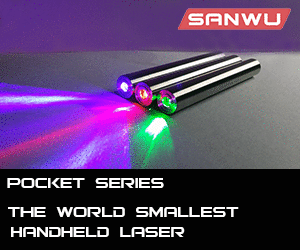Decent drivers are usually designed from years of experience, comparing several reference designs, countless hours of prototyping, component selection etc. Drivers of high end lights are fast becoming trade secrets. Budget level lights often [not always] employ driver circuits copied verbatim from datasheets then shoehorned into flashlights... or simply employ a mass produced driver board and stuff it with a matching battery size. Most datasheet examples are pretty solid, but they are there to get you going on optimizing, for they are in many instances way too generalized to fit any specific application. Many of them are simply boost or buck converters with a lousy feedback loop filled with noise, stray inductance, etc that hamper a good steady regulation.
There's three [or actually four] main qualities necessary to produce a good light: Electrical, thermal, optical, mechanical.
Electrical efficiency is important because at the design level flashlights run on batteries. Batteries have limited juice, and in many instances the forward voltage of the LED is so close to the voltage of the battery that any inline resistance contributed by mechanical fittings may reduce its performance. Poor circuit design may cause absurd current drain without providing much current to the LED. The battery gives out before the regulation sets in the driver drops out of regulation and the user isn't happy, happens all the time. Yes, you could change the driver and it might work out, but you'll have to make sure the thermal considerations have been given thought. There are manufacturers that have produced lights that were thermally deficient around the LED and drove them underspec to get away with it. Swapping in an in-spec driver in this situation will cook the LED
Thermally it should be pretty self explanatory: things heat up, and heat only promotes efficiency at the battery level. Driver produces heat, LED produces heat. A hot driver loses efficiency, a hot LED loses efficacy. Poorly heatsinked and neither may outlast a full set of batteries. Sure, you could build a custom heatsink stool for the LED to sit on and put a new driver in to ensure nothing burns up...but do you really want to go that far?.
Optically speaking, each type of LED possesses a different radiation pattern. Optical loss on premium lights may be as low as 20%, with budget lights, mass produced generic reflectors, noncoated polycarbonate optics.... you could lose 40% of your output easily. This is difficult to change and its somewhat of a permanent limitation unless your intention of utilizing this light is as a host only. Moddrs have long taken on the robustness of maglites, strip out the plastic reflector, mount LEDs with dedicated reflectors, and add a pyrex window. 15 lumens to 2500 lumens! Somewhere down the line you have to decide for yourself whether the resulting benefits outweigh the additional investment, and there isn't really a unit of measure for it.
Mechanically you're light is a tool. You want to have reliability down pat unless its a toy. If there's metal shavings all over inside, rough edges, defect prone switch, anything that could short circuit one contact to another, its best to walk away from it.
The rest is marketing. Find the efficacy of the LED at Tj=25C driven at 350mA, look up the Relative Luminous flux to current chart on the datasheet, then multiply the known efficacy by the gain created by peak driver current... voila, you now have a huge unrealistic disproportional lumen output that's based on real data. In reality, that is instantaneous emitter output only, or "bulb lumens" when you first turn it on. Its the "Out the front lumens" that we really want to know before buying, that is, the output that manages to leave the glass. It could be as low as maybe 60% of bulb lumens. Worser still, LED junction temperatures run at a way more realistic 85C, so remember to de-rate the output even further.
On a side note, you really do get what you pay for. Judging the light by the looks alone is like buying a waterlogged car because it had new wax. You can have the best LED, best driver, best reflector, and best body. But if none of them are truly compatible, its not going to win the best of any awards




